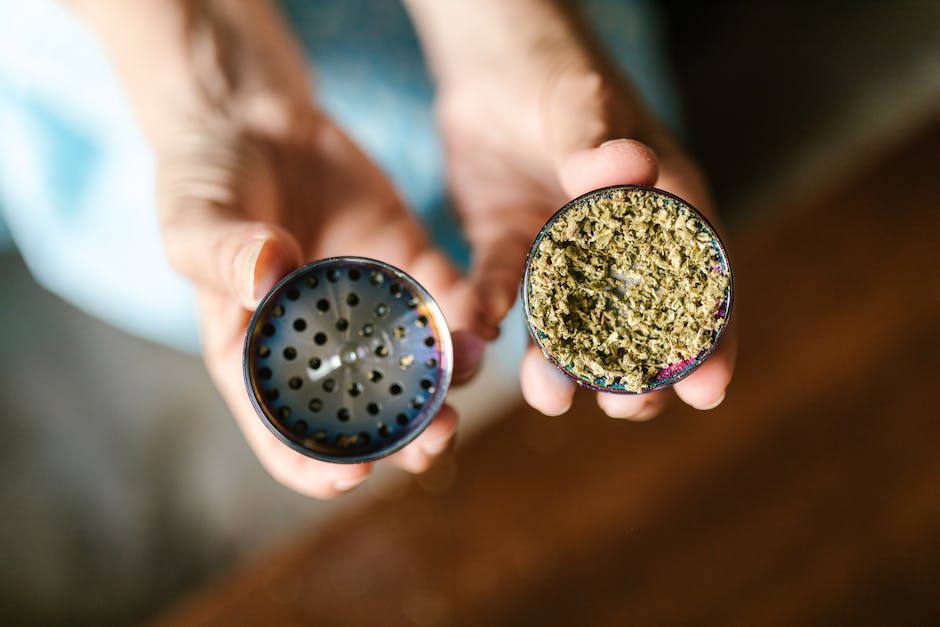Cannabis, also known as marijuana, has become a hot topic in recent years, not only for its recreational use but also for its potential medical benefits. Two of the most well-known cannabinoids found in cannabis are THC (tetrahydrocannabinol) and THCV (tetrahydrocannabivarin). While they may sound similar, they have distinct characteristics and effects. Understanding the differences between THC and THCV is essential for anyone interested in exploring the properties and potential applications of cannabis. In this blog post, we will delve into the intricacies of these cannabinoids, exploring their chemical structures, psychoactive properties, and potential benefits, shedding light on the fascinating world of cannabis and its diverse spectrum.
– Brief overview of the topic: exploring the differences between THC and THCV in the cannabis spectrum.
The cannabis spectrum encompasses a wide range of compounds, each with its own unique characteristics and effects. Within this spectrum, two key compounds stand out: THC (tetrahydrocannabinol) and THCV (tetrahydrocannabivarin). In this section, we will delve into the differences between these two compounds and shed light on their distinct properties.
THC, perhaps the most well-known compound found in cannabis, is responsible for the psychoactive effects commonly associated with marijuana use. When consumed, THC interacts with receptors in the brain, resulting in feelings of euphoria, relaxation, and altered perceptions. Its potency can vary among different strains and products, with higher levels often leading to more pronounced psychoactive effects.
On the other hand, THCV is a lesser-known compound that has garnered increasing attention within the cannabis research community. While THCV shares a similar chemical structure to THC, it exhibits markedly different effects. Rather than inducing a typical marijuana high, THCV is believed to have a more uplifting and energizing effect. Some users have reported increased focus and mental clarity after consuming strains high in THCV.
Beyond the differences in their psychoactive effects, THC and THCV also diverge in their potential therapeutic applications. THC has long been recognized for its ability to alleviate symptoms such as pain, nausea, and insomnia. It is commonly used in medical marijuana products for its analgesic, anti-inflammatory, and appetite-stimulating properties. Conversely, THCV’s therapeutic benefits are still being explored, with preliminary studies indicating its potential in managing conditions like diabetes and obesity.
It is worth noting that while THCV is present in some cannabis strains, it is generally found in smaller quantities compared to THC. As a result, strains with high THCV content may be comparatively harder to come by. However, as the demand for more tailored cannabis experiences and personalized therapeutic treatments grows, an increased focus on THCV-rich strains and products may emerge.
In summary, the cannabis spectrum offers a fascinating array of compounds with different characteristics and effects. While THC is renowned for its psychoactive properties, THCV presents a unique alternative, offering potential therapeutic benefits and an uplifting experience. As research into the cannabis plant continues to expand, the distinctions between THC and THCV are becoming increasingly important, providing users with more options and a deeper understanding of the plant’s potential.
Definition of THC (1)

THC, short for Delta-9-Tetrahydrocannabinol, is one of the most well-known cannabinoids found in cannabis plants. It is the primary psychoactive compound responsible for the mind-altering effects commonly associated with marijuana use. THC works by binding to cannabinoid receptors in the brain, triggering a cascade of chemical reactions that ultimately result in the characteristic “high” sensation.
With its ability to stimulate the release of dopamine, THC can induce feelings of euphoria and relaxation. However, it can also cause side effects such as memory impairment, increased heart rate, and heightened anxiety in some individuals. Due to its psychoactive properties, THC is strictly regulated in many countries and is classified as a controlled substance.
THC is commonly consumed by smoking or vaporizing cannabis flowers, but it can also be found in various edible products, concentrates, and topicals. The potency of THC can vary significantly depending on the strain of cannabis and the cultivation techniques used.
It is important to note that THC’s psychoactive effects have driven much of the legal and cultural conversation surrounding cannabis. However, recent scientific advancements have also shed light on other lesser-known cannabinoids, offering potential alternatives for those seeking the therapeutic benefits of cannabis without the intoxicating effects.
In the next section, we will explore another cannabinoid called THCV and understand how it differs from THC.
– Explanation of THC as the most common cannabinoid found in cannabis.

THC, short for tetrahydrocannabinol, is the most well-known and prevalent cannabinoid found in the cannabis plant. It is responsible for the intoxicating effects commonly associated with cannabis use. When consumed, THC binds to the cannabinoid receptors present in our brain and central nervous system, leading to various physiological and psychological effects.
One of the main reasons THC is highly sought after is its ability to induce euphoria and a sense of relaxation. This psychoactive compound is often associated with the “high” experienced by recreational users of cannabis. However, it’s important to note that THC affects individuals differently, and the intensity of its effects can vary based on several factors, including dosage, consumption method, and a person’s tolerance.
Beyond its recreational applications, THC also possesses several therapeutic properties. Research has shown that it can help alleviate symptoms associated with conditions such as chronic pain, nausea, and muscle spasms. Its potential as an analgesic and anti-inflammatory agent has made it a prime candidate for medical cannabis treatments.
However, it’s essential to exercise caution when using THC, especially in higher doses. Excessive consumption can lead to adverse effects, such as anxiety, paranoia, and impaired cognitive function. As a result, responsible and informed use is crucial, particularly for those new to cannabis or seeking its therapeutic benefits.
In recent years, another cannabinoid called THCV, short for tetrahydrocannabivarin, has gained attention for its contrasting properties to THC. THCV is found in smaller quantities in certain strains of cannabis, especially those native to Africa and parts of Asia. This compound has a different chemical structure, resulting in varying effects on the body.
Unlike THC, THCV is thought to have a suppressive effect on appetite, making it a potentially helpful tool for weight management. Additionally, preliminary research suggests that THCV may possess anticonvulsant and neuroprotective properties, offering potential therapeutic benefits for conditions like epilepsy and Parkinson’s disease.
While THC and THCV share similarities and interact with the same cannabinoid receptors in the body, their varying chemical structures and concentrations in cannabis give rise to different effects and potential applications. Exploring the different cannabinoids present in cannabis, such as THC and THCV, allows us to understand the plant’s complex nature and broaden our knowledge of its potential benefits in various contexts.
As interest in cannabis research grows, the distinctions between THC and THCV are becoming clearer. With further exploration and scientific understanding, we may uncover even more valuable therapeutic applications for these cannabinoids, offering possibilities for both the medical and recreational cannabis industries.
– Discuss its psychoactive properties and effects on the body.

Cannabis has long been known for its psychoactive properties, primarily attributed to its main active compound, delta-9-tetrahydrocannabinol (THC). THC is the primary chemical responsible for the euphoric “high” that individuals experience when consuming cannabis. Upon consumption, THC interacts with the brain’s receptors, namely the CB1 receptors, resulting in various psychoactive effects.
THC affects different regions of the brain, causing alterations in sensory perception, mood, memory, and even motor function. These effects can include euphoria, relaxation, altered perception of time and space, heightened sensory stimulation, increased appetite, and even creativity. Furthermore, THC’s psychoactive effects can induce feelings of anxiety, paranoia, or disorientation, particularly in higher doses or in individuals with a predisposition to anxiety or other mental health conditions.
Aside from its psychoactive properties, THC also has various physiological effects on the body. It can stimulate the release of dopamine, leading to feelings of happiness and reward. THC can also influence heart rate, increase blood flow to the vessels in the eyes (causing redness or bloodshot eyes), and often result in dry mouth due to reduced saliva production. Moreover, research suggests that THC may have potential pain-relieving and anti-inflammatory effects, making it a hot topic in the medical field.
While THC remains the most well-known compound found in cannabis, another cannabinoid called tetrahydrocannabivarin (THCV) is gaining attention for its unique properties. THCV has a structural similarity to THC but differs in its effects on the body. Unlike THC, THCV is reported to have a less potent psychoactive effect, meaning it may not cause the same intense “high” commonly associated with THC consumption.
Research has shown that THCV may play a role in appetite suppression, potentially making it useful for weight management and addressing issues like overeating or obesity. Additionally, THCV has been explored for its potential neuroprotective effects, showing promise in reducing inflammation and oxidative stress within the brain. This has led to speculation about THCV’s potential role in treating conditions such as Parkinson’s disease or Alzheimer’s disease.
In conclusion, while both THC and THCV are cannabinoids found in cannabis, they differ in their psychoactive properties and effects on the body. THC is primarily responsible for the euphoric high associated with cannabis consumption and has both positive and negative effects on mood and cognitive function. THCV, on the other hand, has a milder psychoactive effect and is being studied for its potential benefits in appetite suppression and neuroprotective properties. Understanding the differences between these compounds can help individuals make informed decisions when it comes to cannabis consumption and its potential effects.
Definition of THCV (2)

THCV, short for Tetrahydrocannabivarin, is a cannabinoid compound found in cannabis plants. Similar to THC (Tetrahydrocannabinol), THCV interacts with the body’s endocannabinoid system, which is responsible for regulating various physiological processes.
One key difference between THC and THCV lies in their psychoactive properties. While THC is well-known for its psychoactive effects, which can produce a sense of euphoria and altered perception, THCV does not typically induce the same level of psychoactivity. In fact, THCV may even have the ability to counteract some of the psychoactive effects of THC.
THCV is also known for its potential therapeutic properties. Research suggests that it may have appetite-suppressing effects, making it an area of interest for weight management and obesity treatment. Additionally, THCV has shown promise in regulating blood sugar levels and improving insulin function, which could have implications for diabetes management.
It’s worth noting that THCV content can vary significantly among different cannabis strains. Some strains may have higher concentrations of THCV, while others may contain negligible amounts. This variability underscores the importance of understanding the specific genetics and composition of a cannabis product before making any assumptions about its THCV content.
Furthermore, it’s crucial to highlight that the legal status of cannabis and its compounds, including THCV, varies across different jurisdictions. As such, it is essential to stay informed about the legal regulations pertaining to cannabis in your respective area before exploring products containing THCV.
Overall, THCV offers an intriguing contrast to THC, both in terms of its psychoactive effects and potential therapeutic applications. As further research is conducted, we can expect to gain a deeper understanding of this cannabinoid and its potential contributions to the field of medicine and wellness.
– Introduction to THCV as a lesser-known cannabinoid in the cannabis plant.

THCV, also known as tetrahydrocannabivarin, is a relatively lesser-known cannabinoid found in the cannabis plant. While most people are familiar with THC (tetrahydrocannabinol) and its psychoactive effects, THCV offers a unique range of potential benefits that are still being explored.
THCV is structurally similar to THC but produces different effects due to its distinct interaction with the body’s cannabinoid receptors. Unlike THC, THCV is believed to have more of a suppressive effect on appetite and may even act as an appetite suppressant. This characteristic has sparked interest in its potential application for weight management and obesity-related conditions.
Aside from its effects on appetite, THCV may also exhibit promising therapeutic properties. Several preliminary studies suggest that THCV may have potential in managing and reducing symptoms associated with conditions like diabetes, Alzheimer’s disease, and Parkinson’s disease. However, it is important to note that more comprehensive research is needed to fully understand the extent of its therapeutic benefits.
In terms of psychoactive effects, THCV seems to have a different profile than THC. While THC is commonly associated with feelings of euphoria and relaxation, THCV is believed to have a more energetic and clear-headed impact. Some users describe the experience as uplifting, focused, and even stimulating. This unique characteristic positions THCV as a potential choice for those seeking cannabis-based products without the sedative effects typically associated with THC.
As the cannabis industry continues to evolve, the exploration of lesser-known cannabinoids like THCV presents exciting opportunities for both medical and recreational use. However, due to its relative novelty and limited research, it is important for consumers to exercise caution and consult with healthcare professionals before incorporating THCV into their wellness routine.
In conclusion, THCV serves as an intriguing addition to the spectrum of cannabinoids found in the cannabis plant. Its potential benefits in appetite suppression, therapeutic applications, and distinct psychoactive effects make it a subject worth further investigation. As research continues to unfold, the understanding of THCV’s full potential may unlock new possibilities for the cannabis industry and those seeking alternative wellness solutions.
– Explanation of its potential therapeutic effects and how it differs from THC.

THCV (Tetrahydrocannabivarin) has gained prominence in recent years due to its potential therapeutic effects and unique properties within the cannabis plant. While both THC (Tetrahydrocannabinol) and THCV belong to the same cannabinoid family, they differ in several key aspects.
One of the primary distinctions between THC and THCV lies in their psychoactive properties. THC is renowned for its psychoactive effects, often associated with the feeling of being “high.” In contrast, THCV has been found to have a much milder psychoactive profile, producing a more subtle and euphoric experience. This makes THCV an appealing option for individuals seeking therapeutic benefits without the intoxicating effects typically associated with cannabis use.
In terms of its potential therapeutic effects, THCV shows promise in various areas. Preliminary research suggests that THCV may possess appetite-suppressing properties, potentially offering valuable support for weight management and obesity-related conditions. Additionally, THCV is being investigated for its potential in managing diabetes, as studies have indicated its ability to regulate blood sugar levels and improve insulin sensitivity.
Furthermore, THCV may hold neuroprotective properties, making it a focus of study for its potential in treating neurodegenerative disorders such as Parkinson’s disease. Research has suggested that THCV could help mitigate neurological damage and reduce motor impairments associated with such conditions.
It is important to note that while the potential therapeutic effects of THCV are promising, further research is required to fully understand its mechanisms of action, dosage guidelines, and possible side effects. As such, individuals interested in exploring THCV as a therapeutic option should consult with healthcare professionals who specialize in cannabinoid medicine.
In summary, THCV stands out as a cannabinoid with potential therapeutic benefits distinct from THC. Its milder psychoactive properties, appetite-suppressing effects, potential for managing diabetes, and potential neuroprotective effects make it an intriguing area of study. As research continues to evolve, a more comprehensive understanding of THCV’s therapeutic potential will emerge, potentially paving the way for new therapeutic options within the medical cannabis industry.
Chemical Structures of THC and THCV (3)

Chemical Structures of THC and THCV
To truly understand the differences between THC (tetrahydrocannabinol) and THCV (tetrahydrocannabivarin), it is important to take a closer look at their chemical structures. These two compounds belong to a group of over 100 cannabinoids found in cannabis plants, each with its own unique properties and effects.
THC, often referred to as the primary psychoactive compound in cannabis, has a molecular formula of C21H30O2. Its chemical structure consists of a central pentyl side chain attached to a phenol ring. This phenol ring features a double bond between carbon atoms 6 and 7, along with a hydroxyl group (OH) at carbon atom 9. The presence of this hydroxyl group is what allows THC to interact with the body’s endocannabinoid receptors, leading to the psychoactive effects commonly associated with cannabis use.
On the other hand, THCV has a slightly different chemical structure. With a molecular formula of C19H26O2, it lacks the usual pentyl side chain seen in THC and instead has a propyl group, which is shorter. This propyl side chain provides THCV with its own set of distinctive properties and effects, setting it apart from its counterpart THC. Additionally, THCV features a phenol ring with a double bond between carbon atoms 6 and 7, similar to THC, but lacks the hydroxyl group at carbon atom 9.
These slight variations in chemical structures play a significant role in determining how THC and THCV interact with the body’s endocannabinoid system and ultimately affect individuals who consume cannabis. While THC is known for its psychoactive effects that result in feelings of euphoria and relaxation, THCV is believed to have a different impact on the body. Studies suggest that THCV may act as an antagonist to the CB1 receptor, which is responsible for the psychoactive effects of THC. This antagonistic action of THCV may result in a different experience for users, potentially contributing to increased alertness and a decrease in appetite.
Understanding the chemical structures of THC and THCV provides valuable insights into the biological mechanisms that underlie the diverse effects of cannabis. As researchers continue to explore the potential therapeutic benefits of cannabinoids, this knowledge becomes increasingly important in developing targeted treatments and products that cater to various consumer needs and preferences.
In conclusion, the chemical structures of THC and THCV may appear similar at first glance, but their minor structural differences contribute to the distinct effects and properties of each compound. By delving deeper into their molecular makeup, we gain a better understanding of the wide-ranging potential of cannabinoids and their role in the ever-evolving cannabis landscape.





